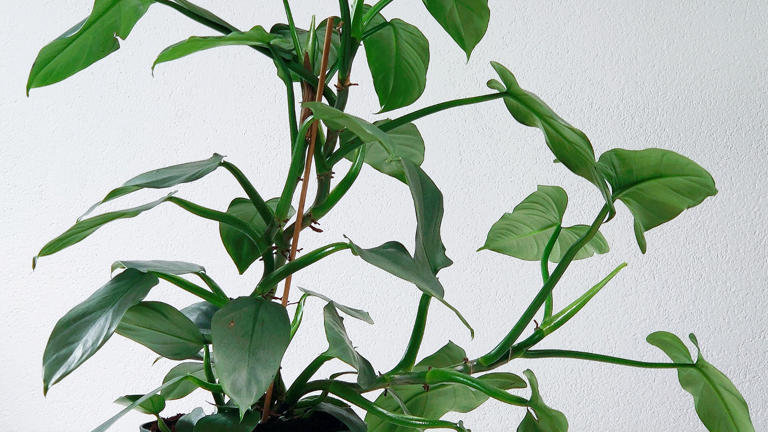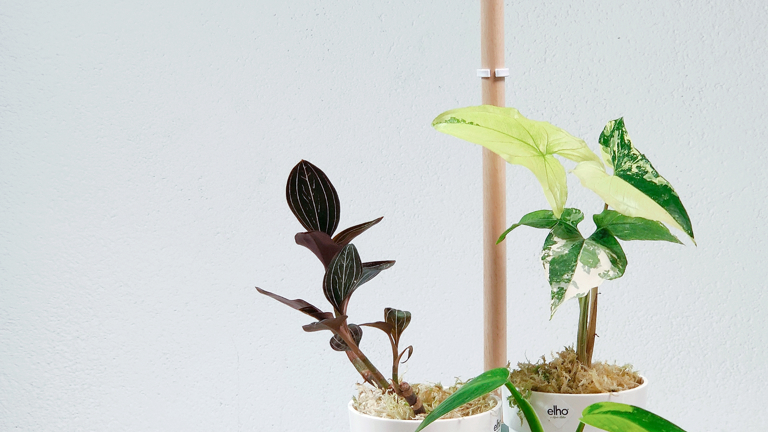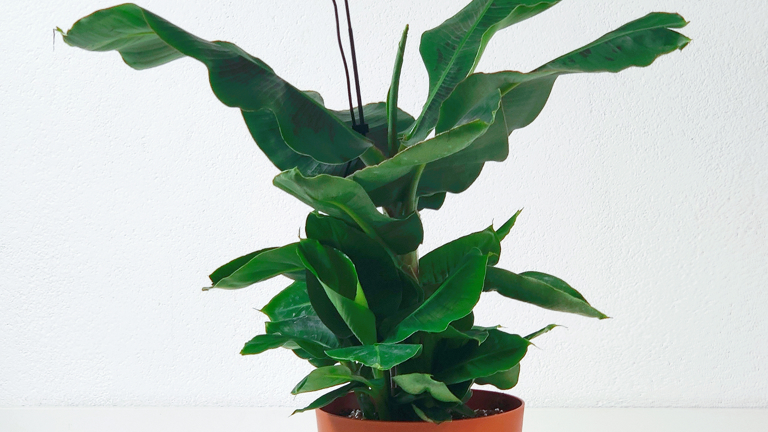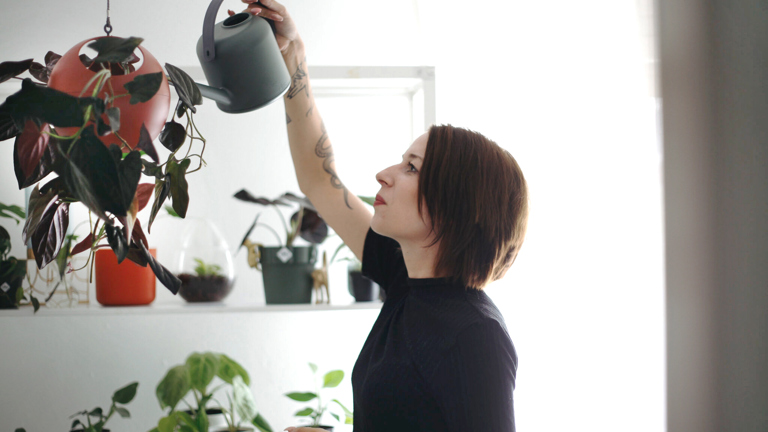
This is how you prepare your houseplants for autumn!
There are a few thing you need to keep in mind during the dormancy period of your houseplants. I’ll give some useful tips and tricks here below so your houseplants can grow well again in the spring and get through these dark, cold months without any problems.
Watering care
Your indoor plants need less water during their rest period. Check the potting soil on regular base. Does the soil still feel moist? Then wait a while before pouring again. Do you have some of your houseplants in an indoor pot? Take it out of the original pot a few minutes after watering and see if there are no remains of excessed water. If this is the case, you can throw the surplus of water away.
Fortunately, nowadays there are also many pots on the market that have an integrated water reservoir. This reservoir collects the surplus of water, so you don't have to be afraid of root rot. The roots of your plant can get the excess of water from the reservoir, so your plants won't get too dry either. I have the greenville collection at home for this.

Plant nutrition
Stop giving your plant nutrition around mid-October. In the winter, your plants consume much less nutrients. An excess of nutrients can cause damage to the root system. It is best to start feeding your house plants from March again.
Make sure there's enough light
As the days are getting shorter, your plants are getting less light. Although your plants are in a rest period, light is still very important. Yellow and/or faded leaves are signs of insufficient light. Your plant will look lifeless. I would like to give you some tips:
• Move your plants to the brightest places in your home. Make sure that your plants are not in a draft, for example near windows or doors. You also have to be careful when placing plants on your heating.
• Keep in mind that plants cannot appreciate temperatures below 15 degrees. The health of your plants will deteriorate and you have a chance of insects such as spider mites or thrips.
• Regularly clean the leaves of your plant. This makes them absorb more light. You can make your leaves dust-free with a damp cloth or by regularly spraying with water.
Do you still want to place some plants in a darker corner of your house? Then use a plant lamp. Plants have a day and night rhythm, try to disturb this as little as possible. Your plants may receive light for a maximum of 16 hours a day, after which they must "go to sleep". In the winter months, plants receive an average of 12 hours of light per day. Those few extra hours of light per day ensure a healthier plant and that they will really shine.
At the start of my plant career, I had to manually switch a lamp on and off every day. I reminded myself of this with an alarm clock. You already understand, that is quite time consuming. Fortunately, there are now a lot of plant lamps on the market in which this timer can be set automatically. I myself use the elho plant light care for this.
Especially my baby plants and cuttings have it extra hard in the winter period. These are not yet mature and therefore less strong, so they certainly deserve a little more attention and love! I think the advantage of the plant light care is that the lamp does not get hot, so the delicate leaves of my mini plants and cuttings will not burn.

I use the leaf light care for my larger houseplants which I don’t want to move. You simply poke this into the earth. The rod is adjustable from a minimum of 36 cm to a maximum of 1 meter. Pay attention to the light range of the lamp, because the light should shine on your plant as much as possible. I maintain a distance of 30 cm from the leaves. The light then fans out nicely. In addition, the leaf light care has an automatic day and night cycle. The lamp is on for 15 hours and 9 hours off and has an integrated sunrise and sunset to boost the most realistic possible incidence of light.

In addition to the above tips, also take into account not to repot your plants, even if they unexpectedly get a growth spurt. It’s best to wait until spring, as repotting can damage the roots. In the spring, these roots recover more quickly from any damage. Do you apply the above tips? Then your plants are ready for fall and winter!
Pictures by @Greeny_Lab and Indebuurt Eindhoven
Who's Rosalien?

Hi, my name is Rosalien! Most people know me as Roos. I am 22 years old and I live with my 2 cats Friendo & Poezel and about 150 houseplants near Eindhoven. In my blog posts for elho I will tell you more about everything in the field of (taking care of) houseplants! My passion for indoor plants started about two years ago and my plant collection has gotten a bit out of hand now. I now have a lot of knowledge about indoor plants and I put this into practice every day. I spend most of the day taking care of my plants and making the right soil mix or plant nutrition. I already share this knowledge on my instagram @Greeny_Lab, but now also with you for elho!